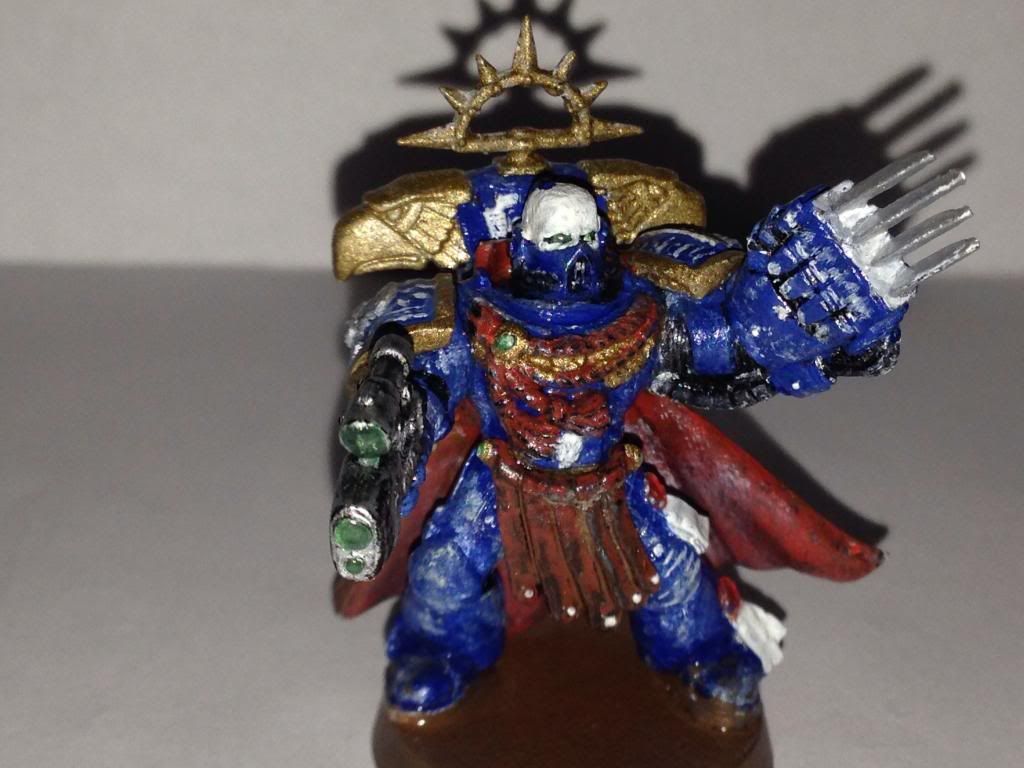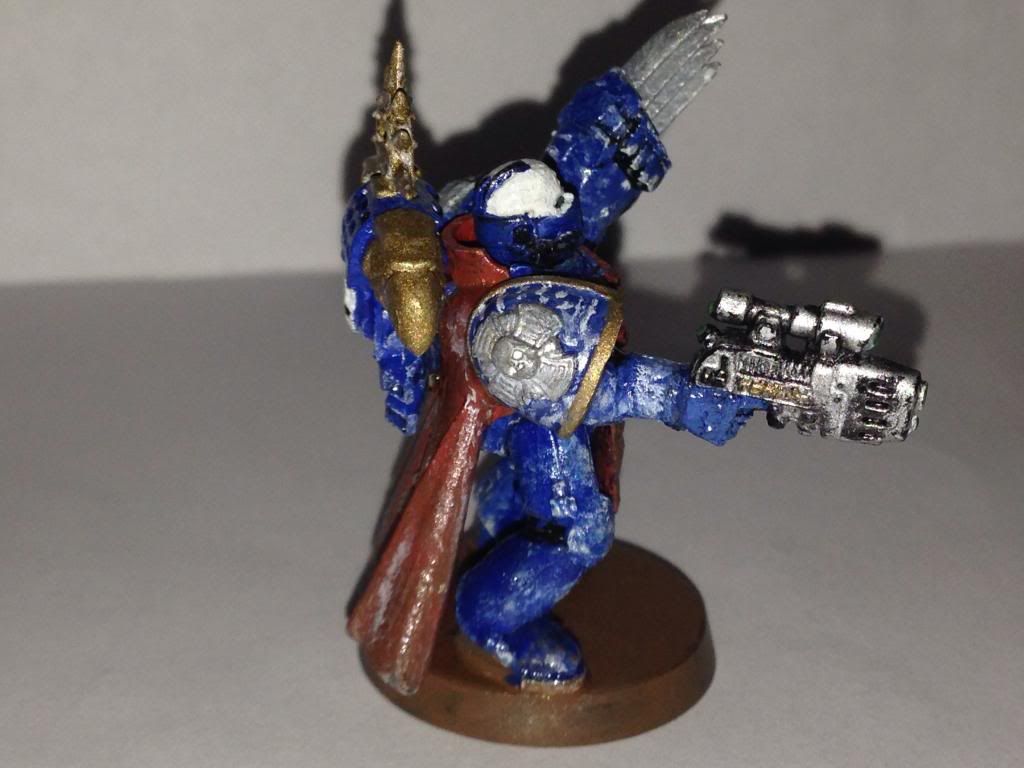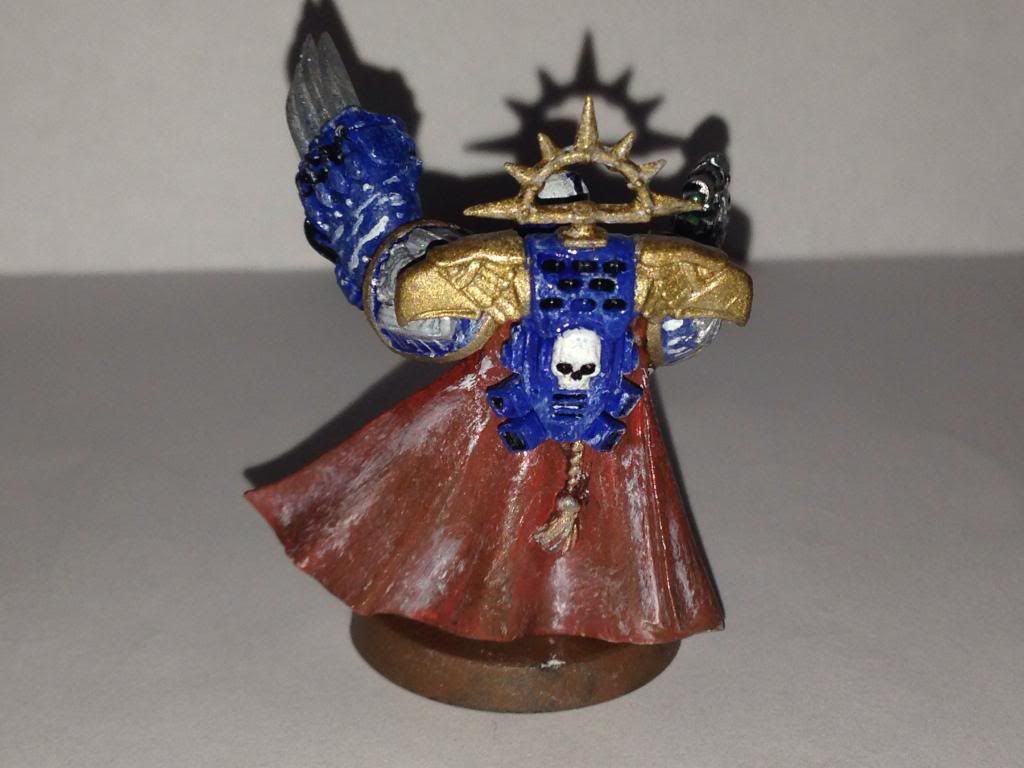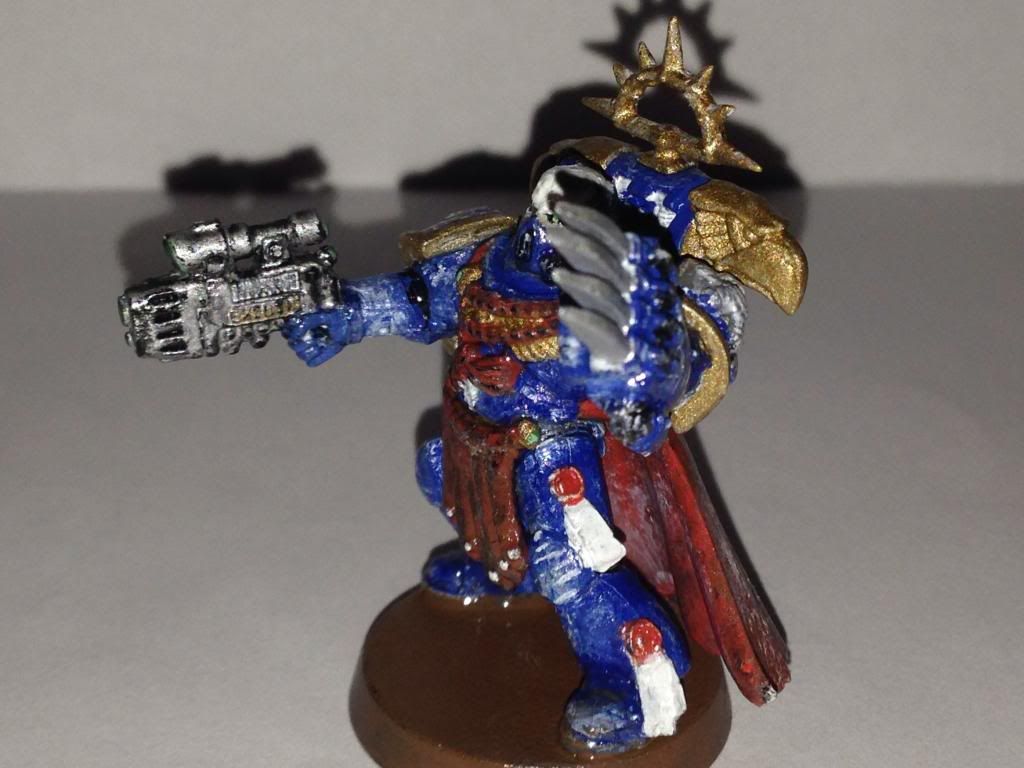|
Hey there. Great first model! Most people (myself included) don't even manage to get the paint in the right places! I can see you've made some effort to vary the colours a bit as well.
My feedback is as follows: well done, you've definitely got the makings of a great painter.
Firstly, don't use your paints straight out of the paint pot. They're quite thick, and using them this way creates an unwanted "gloopy" texture on the miniature.
It's difficult to provide rock solid advice on how much water to add to your paint, because the different paints cover better than others. Often just a drop of water will open the paint up and make it flow more smoothly. However, with some paints you might need to add a bit more. With some, just adding a bit of water thins them so much you will need to apply two coats, as watering down the paint makes it thinner and cover less well.
Don't water them down too much though, because then they're more difficult to control, and likely to run all over the place and pool in the cracks!
The plus side of thinning the paints is that it will then be much easier to paint on highlights and other details, because you'll have a nice smooth texture, which looks better too. Also, my next subject- washes. Washes look bad over paint which hasn't been thinned, as it emphasises all the unwanted texture that overly thick paints create.
The next thing to talk about is washes- the easiest and quickest way to get shadows on the colours of your figure is by using inks and washes. All the main miniature paint brands make ready to use washes in different colours. The most useful colours are brown and black- brown will go over almost every colour, while black is good for metallics and dark colours. However, to keep your colours looking vibrant you will often want to start with a wash the same colour as the colour you're trying to shade, but with a bit of black or dark brown wash mixed in with it, till you're getting a significant shadow colour.
When you've got nice smooth coats of paint because you've used a dash of water to thin them a little, washes will go over them really well. Give them a try- they really do work nicely and give a good effect. You just need to be careful to keep the wash where you want it- they are quite runny of course!
I often apply washes in two coats- I cover the whole area with the wash first, and then when it's dried I put wash just where I think the deepest shadows should be.
Often the wash will cling to the cracks and emphasise the detail of the model. Sometimes, on larger areas like cloaks, you'll have to apply it where you want it to be, because it'll be less inclined to stick where the shadows should be.
I think those two things will really get you on the road to painting great miniatures. Once you feel confident with them and have a few more figures under your belt you can look at the idea of highlighting using the layering technique, and learn about dry brushing; I think, looking at your figure, you know about these two techniques already. My advice is to leave them alone for now and concentrate just on smooth coats and washes, and come to layering and dry brushing once you've got a bit more experience. I'd be more than happy to help with both of these once you've painted a few models. Drop me a PM and I'll post again. Don't want to bombard you with too much info all at once!
Hope that helps.
_________________ Available for Commissions! Check out my blog: http://yggdrasilpainting.wix.com/yggdrasilpainting |
 Top
Top Top
Top Top
Top Top
Top Top
Top Top
Top Top
Top















